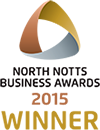Laying Self Levelling Screed
Are You Thinking About Laying Self Levelling Screed?
I’m Andy Parkin, Managing Director of the Multi-Award Winning Speed Screed. I’m here to talk about laying Self Levelling Screed.
I would say that I don’t believe there is a “Self Levelling Screed” per say, yes a self-smoothing, but not self-levelling, please don’t lay the screed and expect it to level itself. However the term “self-levelling” is used extensively in the industry and I will use it here.
For the purpose of this video I will also assume that “laying Self Levelling Screed” is a levelling compound normally laid between 1-10mm.
When laying vinyl, ceramic tiles, carpet and other floor coverings. Self levelling screed levels out uneven substrates leaving a smooth flat surface to bond to.
Before laying self levelling screed, its suitability needs to be determined. Most projects will have one of three different types of substrate as follows:
Construction Types
- Bonded is very relevant to the laying self-levelling screed, as it relies on the bond with the substrate. Self levelling screed would be suitable for this type of construction.
- Unbonded is where you have a membrane in between the substrate and the screed. This type of construction is not something that would be suitable for this type of screed.
- Floating construction is where you have the screed sat on insulation, be it acoustic or thermal insulation. This type of construction is not something that would be suitable for this type of screed as bonding is normally required.
Sound Substrate
When bonding I think it is important to highlight the process. When looking at the substrate, it needs to be sound. When we say “sound,” it needs to be solid. If you have crumbling, cracking, or other issues, then action needs to be taken before laying the screed. There is no point in laying self-levelling screed onto something that isn’t stable, because it will only result in the screed cracking and/or de-laminating.
Contamination
Checks should be made to ensure that the substrate is not contaminated. Contamination can be a variety of things, oils, grease, dust, anything that may have gone into the pores of the screed (the capillaries of the screed). If there is contamination it may require some mechanical surface preparation, which may be grinding/scabbling or shot blasting. If there is paint on the substrate then it will need to be removed, before laying self-levelling screed.
The surface needs to be clean and vacuumed if there is dust/dirt on the surface. Before laying self-levelling screed a primer needs to be applied to the substrate to assist in the bonding of the self levelling screed and the substrate. Sometimes it can go down without the primer, always read the instructions before laying. Either way you are going to need some penetration of the surface. It needs to bond, so it may be that you must grind off the first couple of millimetres of the matrix to get down to something that is bond-able.
If the substrate is power floated concrete, then the top of the matrix will need to be removed to get to the more open textured concrete that will allow the primer to penetrate. There are certain products that may go down directly onto it a power floated surface, but again, you would have to look at the requirement for each individual product. In general, you would be looking at mechanically altering the surface to allow for better adhesion between the screed and the substrate.
Self-levelling Screed Thickness
When laying self-levelling screed, the thickness varies from product to product, however as a general guideline please find the depths below:
- Minimum depths are usually 2-3mm, however there are some products that can go down to “featheredge”
- Maximum depths are around 10-15mm, however with the addition of bulking aggregates (normally kiln dried sand) when laying self-levelling screed can go to a depth of 30mm.
Substrate Moisture
Generally, when laying self-levelling screed the substrate should be 75% relative humidity or less, if above a liquid damp proof membrane maybe required to suppress the available moisture.
I would recommend that the surface is always tested for moisture before proceeding.
Primer/Bonding Agent
When completely happy with the substrate, you are now ready to apply the primer which assists with the bonding of the screed and substrate.
Each product will have a tested recommended primer and may have different ratio’s to water. Always check with the manufacturers guidelines before proceeding.
Generally, the primer needs to be dry before laying self-levelling screed, however it wouldn’t normally be left too long (always check the product for instructions).
When applying the prime use a brush, and make sure there is no pooling of the primer.
Screed Mixing
If mixing by hand using an electric drill, the powder is added to the correct amount of water (again work from the manufacturers guidelines for their product), whilst mixing thoroughly until a lump free mortar is produced.
The screed is then poured onto the substrate, laying self-levelling screed is then carried out by using a steel trowel or float to spread the mortar and finish off.
Generally, the screed will self-smooth for the first 15 minutes and have a total working time of around 30 minutes, depending on site temperatures.
Drying Times
Site conditions will effect drying times, however 3 mm of screed would normally be dry within 24 hours, and walk-able within 3-4 hours.
I hope this helps with your “laying self-levelling screed” questions, if you would like any further help please get in touch.
Our Accreditations
About Speed Screed
Speed Screed Limited was founded on the key principle of providing first-class customer service. It has since built itself an impressive reputation for delivering high-quality projects across the United Kingdom.
The company’s success is built on its belief in quality work, attention to detail, on-time completion, strong working partnerships and the recruitment of top-level staff. about us >








